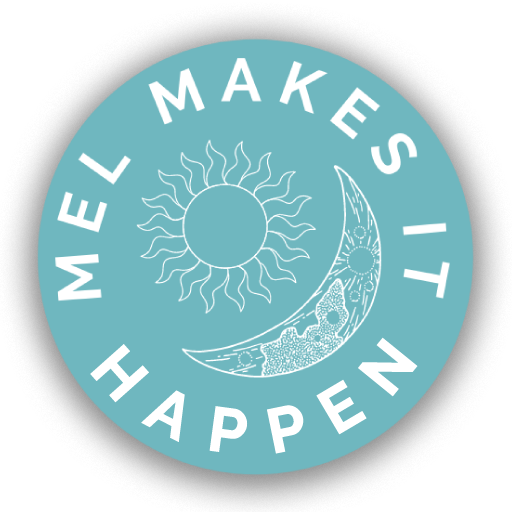Before we dive in, I want to mention that May is not only Mental Health Awareness Month but also National Arthritis Awareness Month. While mental health is something I am really passionate about now and need to creatively stay on top of it, arthritis is not as big a part of my current story. I am so fortunate to say that because I know that it is a painful, daily reality for many people. I don’t often talk about my own experience with arthritis because, according to my doctor, I outgrew it.
However, I’d be silly if I said that having arthritis did not impact my adolescence and the way I view health. Arthritis is thought of as a physical disease but I don’t see how you can have a physical illness and not also have that affect your overall well-being.
This is my experience with being diagnosed with Juvenile Rheumatoid Arthritis* and how I no longer have it.
Spoiler alert: this isn’t a miracle story, nor do I have any special hacks or medications that I used for overcoming JRA.
Early years
I’ve always been a girl with a lot of energy just seeking ways to let it out. So, like many kids, my favorite outlet was playing outside. Whether that was freeze tag during recess at school, riding my bike, or running through my neighbors’ orchards. Anything and everything was fun to me!
Despite being a fun-loving kid, for as far back as I can remember, my childhood was plagued by knee pain. I’d employ my parents to rub Aspercreme on my knees and wrap them in a fabric gauze to keep them warm. My dad often spent weeknights massaging my knees to help soothe the pain I felt. I wasn’t falling off my bike or doing anything to obviously hurt my knees. So, my parents said it was likely growing pains. Growing pains that lasted for years and years….
The symptoms set in
Around age 11, my sister and I joined gymnastics together. I had been looking forward to this so much but a few months in my knees began to hurt. I had knee pain pretty often but it was always for short periods and a massage or some Aspercreme would alleviate it. Yet, this knee pain felt different and it wouldn’t go away. I considered that maybe I hurt myself in gymnastics and took several weeks off, but my knee pain only worsened.
To put this into perspective, I was wrapping up my final weeks in 6th grade when the pain started to kick up. As the hot days crawled, so did the pain in other parts of my body, too. My skin developed little red blotches, like an allergic reaction. Red, hot (but not itchy) spots covered my legs and thighs, my belly and back, my arms and neck, and face. With every joint inflamed, I felt miserable. I had no energy to see friends, pursue hobbies I used to love like drawing (my hands and wrists hurt), and walking up the stairs in my house felt like a mission. It’s so weird to think of that now but I pretty much spent the majority of that summer between 6th and 7th grade laying on the couch in pain.
The white coat roundtable
I had to ask my mom about this next part because I couldn’t remember when I actually saw the doctor who would change everything. Basically, I had to go through a big run-around with the pediatrician, get bloodwork, then get his referral to other specialists who had their own blood panel to request. Finally, I got referred to the Rady’s Children’s Hospital and met with a few different doctors in white coats. Each were specialists in different fields; each had unique sets of questions for me. My parents were in the room, too, and filled in the blanks for anything I couldn’t piece together.
The specialists asked me questions about my health, habits, behaviors, symptoms, and more. From that discussion alone, it was still a mystery if I had leukemia, lupus, or cat scratch disease. It wasn’t until another specially-requested blood panel that I came out positive for JRA.
The rheumatologist took over from there and the action plan was treatment with medication to get the inflammation and pain under control fast. At this time, I should also mention it was the start of my 7th grade school year. Prior to me even seeing the specialists, I had to endure walking the halls of a new school feeling decrepit, barely able to carry my own weight. My mom had made arrangements with the school to give me a little extra time to get to class in case I had a hard time walking. My backpack was heavier than I could handle so I also had some classroom accommodations made. That way, I didn’t need to carry the giant textbooks to class. I honestly felt so embarrassed even though I had a condition.
I didn’t want to think of myself as sick even though my body was unfamiliar to me and in so much pain.
Treatment hurdles and victories
Despite all this, it didn’t take long for the medication to work it’s magic. If I remember correctly, I was on prescription prednisone (steroids) and high-dose naproxen (pain killer) for several months. After my body stopped feeling like an inflammatory war zone, my doctor introduced me to methotrexate, a DMARD. DMARDs, disease-modifying anti-rheumatic drugs, are basically the non-steroidal answer to arthritis treatment because they help bring down inflammation, pain, and swelling, but also treat the actual arthritis-affected joints by slowing down their deterioration, according to WebMD.
The time I was on steroids seemed like the longest ever–I was in a transitional age and felt like all eyes were on me. I also felt additionally uncomfortable in my own body because I was gaining weight (side effect of the steroids). I was at the highest weight I’ve ever been at that time but at least I wasn’t in pain. So, by the time my body got settled on methotrexate, and I eased off the steroids, the worst was behind me. My pain stayed gone, methotrexate seemed to work without negative side effects. Some days required an extra naproxen pill on top of the methotrexate I took morning and night, but, otherwise, things were pretty smooth sailing.
The coolest part, now that I look back, was watching how I started on 7 little methotrexate pills daily and over the years was able to drop them down bit by bit. A time or two I would work with my doctor to try dropping down the amounts and my body would flair up. It wasn’t until I was a senior in high school, around 2011, that I finally got cleared of JRA.
I had reduced my medication successfully and symptoms no longer persisted.
I am so thankful for the amazing pediatric rheumatologist that I had treating me. He was patient, insightful, and helped me so much. Admittedly, he offered consistent suggestions to do things like pick up a sport or physical activity and that would help my joints all the more. The teen girl in me ignored the advice but, in later time, I’ve seen how implementing exercise helps maintain fluidity in my body, reduce stiffness, and lower inflammation. That being said, there is still one frustrating aspect about western medicine in that I never found out the root cause. Way before I ever got the chronic pain I did in the 6th grade, I was having knee pain most days out of the week. Were those early signs of arthritis? Even my rheumatologist could only say, perhaps.
While I was “in remission”, I was also concerned about symptoms coming back. There is a possibility of individuals who have Juvenile Rheumatoid Arthritis developing other forms of arthritis as an adult. However, it is also quite possible to not have arthritis symptoms come back at all.
Years after all of that I acquired an interest in health and went on to study nutrition through IIN. Some of the takeaways I got from there made me wonder if diet and lifestyle habits could have influenced my development of JRA. It’s hard to say. Even I especially cannot say that certain things were healthy or unhealthy because that is so individual. Yet, perhaps there are genetic predispositions and certain lifestyle habits will flick on those symptoms like a light switch. All I can do is take the best care of my body that I can now and give thanks for the amazing doctor and treatment options I had available to me at the time.
I only had arthritis for about eight years in my youth but many people of ALL ages suffer from arthritis. I’m awaiting more discoveries in the field of arthritis and hopefully increased research about holistic treatments to help the millions of people dealing with arthritis today.
*While I had arthritis, it was labeled as Juvenile Rheumatoid Arthritis but in later years the terminology changed to Juvenile Idiopathic Arthritis. I use JRA for consistency and time-relevancy throughout this post.



